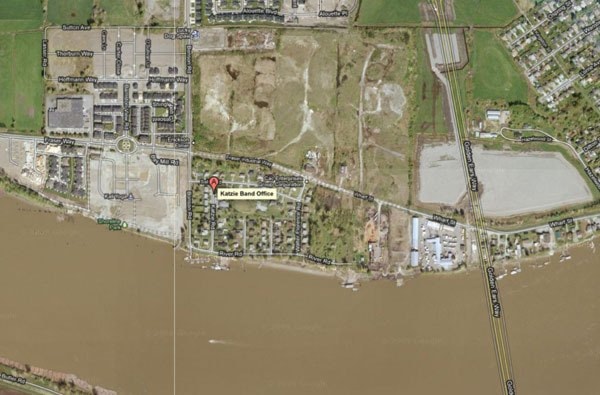Municipal councils in Metro Vancouver are being asked to mull whether people who live on First Nation reserves should be excluded from civic elections.
A paper being circulated by the Lower Mainland Treaty Advisory Committee, which represents 26 jurisdictions, wants the issue discussed as more First Nations explore market housing, which could lead to large increases in populations on reserves.
The paper recommends the province amend municipal and regional district boundaries to leave out native reserve land.
“It’s fundamental democratic common sense,” said committee chair Ralph Drew.
In B.C., residents of reserves can vote in municipal elections and referendums when the land is located within municipal boundaries even though their areas fall outside the regulation and taxation authority of local government.
“What’s happened in recent years is the federal government has brought forward new legislation to foster economic development on reserves,” explained Drew, who is the mayor of Belcarra.
“We support that legislation, but what it did, it shone a big light on what the implications for local governments are.”
He points to the Squamish Nation’s 2004 Capilano Plan, which features variations of high-density residential development on reserve land between Park Royal South and Ambleside Park in West Vancouver.
In the next 25 to 35 years, the Squamish Nation plans to build about 12,000 condominiums, townhouses and commercial units on it. The development could add 25,000 people the reserve in West Vancouver.
“To put that in perspective, that’s the size of the City of Port Moody,” said Drew.
The proportion of residents living on-reserve and eligible to vote in District of West Vancouver could increase up to 30 per cent within 25 years.
“They would be determining budgets and service levels and everything else for which they don’t pay for,” Drew added.
Pitt Meadows Coun. Doug Bing, who represents the city on the treaty committee, also believes the increase in on-reserve populations is a growing trend that could cause possible future problems for municipalities.
Katzie First Nation Reserve 1, located within Pitt Meadows, had a population of 246 in the last census, conducted in 2006.
The city is currently negotiating an agreement with the band to supply water, sewer disposal and fire protection services to it.
“It’s silly to wait until the problem happens and then try to fix it,” said Bing.
“If we know this is a trend and a problem that could happen, it makes sense to have this discussion now and see if we can work out some solution that will avoid confrontation down the road.”
In Maple Ridge, the Kwantlen First Nation revealed plans last year for its land along Lougheed Highway, including a 290,000-square-foot mall and housing development.
Coun. Craig Speirs, the district’s representative on the treaty committee, doesn’t have a problem with people on reserves voting in civic elections, but would like to see non-Aboriginals who live on First Nations land be granted rights to vote for band councils.
“It will even the playing field,” Speirs said.
“I don’t think municipalities have anything to worry about. It is also an excellent demonstration of inclusion and, to me, that’s more important than anything else.”
The Katzie and Kwantlen First Nations did not return calls for comment.
